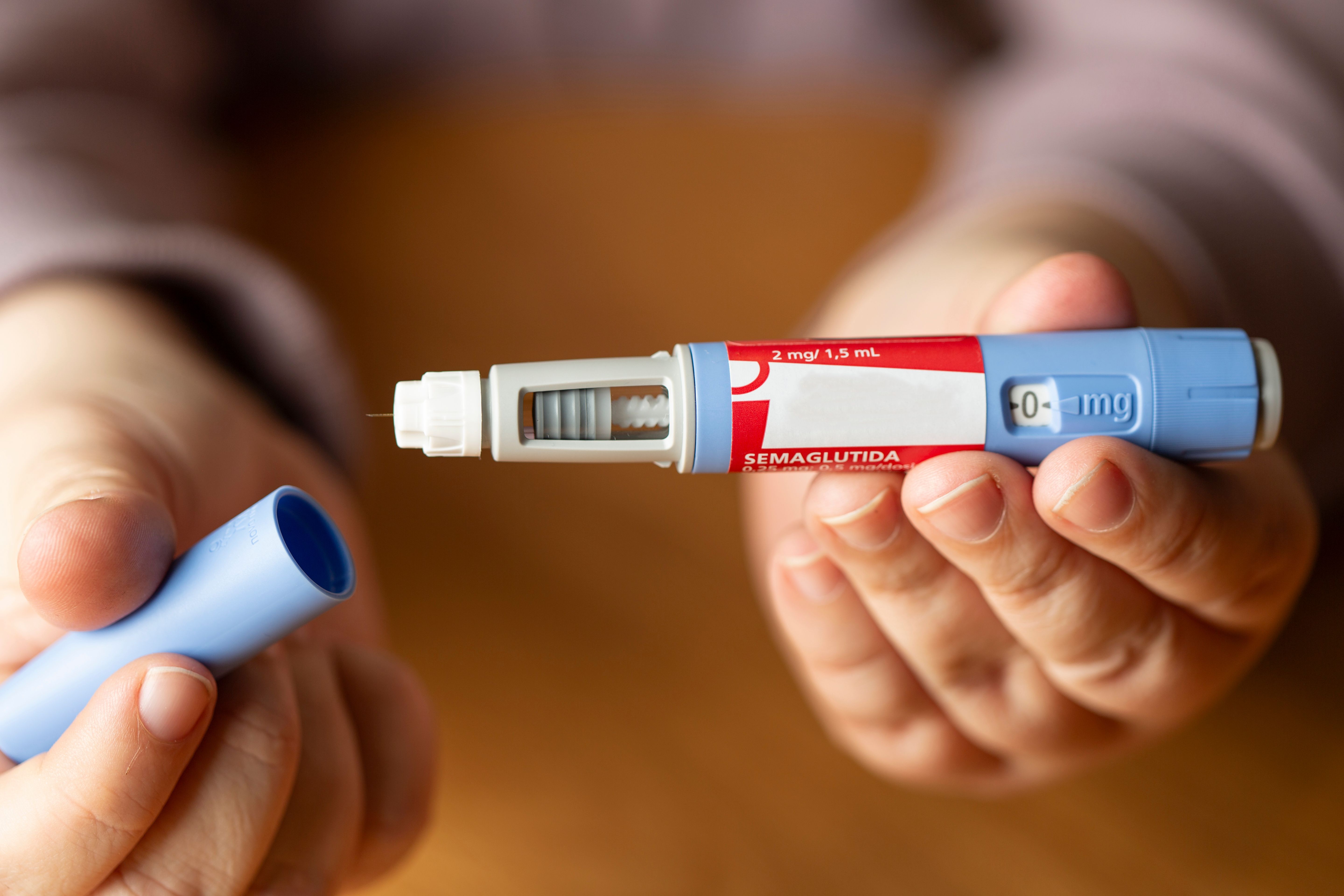Video
Expert: New Cap On Out-of-Pocket Costs for Medicare Beneficiaries Could Be Significant for Some Patients
Patients who had previously hit their out-of-pocket maximums could see a significant change.
Aislinn Antrim: Hi, I'm Aislinn Antrim with Pharmacy Times®, and I'm here with Joey Dizenhouse, senior vice president and head of pharmacy services at Health Trust, to discuss the recent Inflation Reduction Act and how it could impact drug pricing and access and a variety of other issues. How might this larger act impact drug pricing for all Americans, including those who receive medications through PBMs?
Joey Dizenhouse: So Medicare Part D, as we discussed, I think there's a real benefit there. That's all the provisions that will lower the out-of-pocket costs. It's not just sort of standard Medicare Part D, or PDP plans as they're called. There's a whole alphabet soup of other programs, Medigap and MVPD, and I think there's incidental benefits that apply there.
Now, about the commercial space again, when I think about what causes cost to change in a commercial plan, the price of the drug itself is only 1 element, right? We talk about a trend or inflationary costs, and it's usually a makeup of at least 3 things: the cost per drug, the amount of the drug being used, the utilization, if you will, and then the mix, so is a cheaper drug being replaced with a more expensive drug for the same condition. So cost per unit is only 1 element of trend, and it isn't even necessarily the biggest one.
So, the impact for typical Americans in a commercial plan, I think this law creates another thing to worry about, but there was already a long list of things to worry about. So, this is just something more to consider. I think there will be some effect, but I don't think it will be significant, and I don't think it'll happen fast. I think there'll be a little bit of a wait and see attitude as it relates to that.
Aislinn Antrim: Good to know, and how could this change consumer drug access?
Joey Dizenhouse: I don't think it will. If by access, you mean the ability to get the supply of the drug. Well, the drugs that have supply issues are not the same kinds of drugs that we're talking about. They're typically generic products, and what happens there sometimes is that a manufacturer has been shut down for an issue with production, perhaps from the FDA. Or it could be that there are less and less manufacturers quickly as some don't think that there's enough profitability in that molecule, so they leave, leaving less manufacturers, leaving less supply.
None of this is impacted by what we're talking about here. This is generic molecules. Frankly, when talking about what should the cost of a generic drug be, you sort of go into the other side of this argument because if you can buy a pharmaceutical grade vial of a particular drug for 20 cents, one must question, is that is that viable as well? Right. In thinking about the right price for a drug, there is a minimum that makes sense to, especially when you're thinking about protecting the supply to make sure that all Americans have access. But no, I wouldn't expect there to be any access issues from this.
Aislinn Antrim: Good. Will this change standard pharmacy benefits coverage.
Joey Dizenhouse: Benefits coverage is an interesting one. Medicare, yes, by way of the things that we've talked about, generally for the good, perhaps, to be a bit of a contrarian for a moment. One thing on the other side is when we lower the out-of-pocket maximum to $2,000, do we create a risk in some situations that patients hit that $2000? Now, there's no cost to them to continue with the drugs.
So maybe it becomes a little too easy to take the more expensive product. Maybe there aren't enough limiters in the program design, what have you, to prevent it. We talked about the consumerism effect of that, and will that be impacted? I think that is a relatively small issue.
But other than that, I think the benefits are solid on the on the Medicare side. On the commercial plans, I think there's going to be, at most, very limited impact in the short term.
I think what typically happens is planned sponsors. They they look to their actuaries to tell them what's going to happen to the plant cost next year those actuaries are modeling the anticipated impact of the trend elements that we talked about earlier, they may add some effects from this law. Then that would impact funding rates. So how much do people pay to their paycheck for their insurance? And then maybe how much they pay in co pays or deductibles? But again, I would characterize it as being really small, and then perhaps a little bit of panic or fear, right? Just thinking about, oh, goodness, me, what is this going to do?
Therefore, we need to be aggressive in our budgeting and make sure that we're expecting the worst, and then hopefully, we're wrong, and that might have a little bit of a shorter term effect, but I don't expect that to be material either. I think it'll be just another one of those things that goes into the underwriting, so to speak.
Aislinn Antrim: Wonderful. Importantly, an addition was removed from the bill that would have capped insulin price for non-Medicare customers. Why was this removed? Are there other efforts to lower prices of insulin more generally, across the board for patients?
Joey Dizenhouse: I can't speak to all of why it was removed. I know there were multiple factors in play. I think it came down to sort of a parliamentary procedure, and what can get passed versus not. I have to say that I just don't think that the insulin pricing for the patient in the commercial space is that big of an issue. I should give you a caveat with that, but if you look at if you look at the typical commercial patient, right, the cost of insulin monthly is not that different from $35. In fact, for the groups that I've got a closer line of sight to that I'm working with currently that average is less than $35.
Where it might be a risk is those in high deductible health plans that are not taking advantage of manufacturer coupons or copay assistance and other types of programs like that, or uninsured people, which is a problem in and of itself. I don't mean to minimize those groups, because they are, they are non-negligible groups, of course, and important, but at the end of the day, there are other programs that are available and can be taken advantage of. It would have been an additional protection to have retained the insulin cap for non-Medicare customers, but it certainly would have been more impactful if it was the other way, and it impacted commercial only and not Medicare, that would have been a more serious concern. Insulin is just one of those products that a patient that is rationing their dose or not taking it in order to save money creates all sorts of complications that both impact their quality of life and the broader healthcare costs.
Aislinn Antrim: Definitely. One of the other important pieces to this bill was the cap on out-of-pocket costs for Medicare beneficiaries, and you've talked about this a lot. But to kind of focus on it for a moment. What does this mean for patients in practice?
Joey Dizenhouse: If you were an individual that was not hitting that out of pocket maximum, you probably aren't paying much attention to it, you're probably feeling good that it's there. Then maybe one day, you'll realize that you were the lucky one that saved a bunch of money because you needed, not lucky to need a certain expensive drug necessarily, but you avoided the cost from it beyond the $2000.
If you're one of those that are paying more than that today, then you're benefiting in some way a little bit or a lot. There are at least a couple of 100,000 patients that that pay, because that lack of a catastrophic limit today, they're paying over $5,000 a year. Then of course, there's people who pay $20,000 a year and it's a shrinking number, but the number really is uncapped.
So it's just a big deal for those, the generally fixed income, and then protection and preservation of the subsidies that are embedded inside that Medicare Part D program, I think just means just generally great things for that for that Medicare community.
Aislinn Antrim: Absolutely. We've talked about a lot of different pieces within this bill. Are there any other pieces to it that you want to mention?
Joey Dizenhouse: I know you have a large pharmacy and pharmacists’ readership and that'll include folks in different elements of the space – retail and specialty and hospital. We haven't talked about reimbursement. So, one of the components of the price of the drug is also the reimbursement of the drug that affects pharmacies, that affects providers. So, I would just, encourage sort of staying close and thinking about the implications of that.
The bill defines a sort of maximum fair price term, or MFP, like we needed another acronym, it's going to say, here's how much we'll index the drug to, and then the reimbursement will be tied to that. So for a dispensing pharmacy, it will be that MFP plus a dispensing fee, which an unknown dispensing fee are not called out unnecessarily. That can impact, certainly independent organizations that are looking at their financial bottom line, perhaps less of an issue for larger chains that have that scale, but still something I'm sure they'll look at.
Then providers, the notion of, particularly infused products or J-code products as we refer to them and the impact there. I think that's something to be watched. I think there is a fairly limited effect, again, because we're only talking about a handful of drugs. But depending on which drugs as a pharmacy you dispense or which drugs you administer as a provider, the impact could be smaller, or it could be moderate, I would say.
Aislinn Antrim: Definitely. You mentioned this again, at the beginning, but to kind of bring it back full circle. Do you think this bill could be a step towards more sweeping changes in the future?
Joey Dizenhouse: I definitely do. I do. I think it's going to accelerate this discussion, and the very difficult conversation about efficacy versus cost, and quality of life, and longevity of life, and all of these things. They’re not popular conversations, but they have to happen, and back to the GDP conversation, it's just not it's just not sustainable. I think that this is a nice wedge into that conversation that will at least force it to happen in a more in-depth way than otherwise would have.
Newsletter
Stay informed on drug updates, treatment guidelines, and pharmacy practice trends—subscribe to Pharmacy Times for weekly clinical insights.






